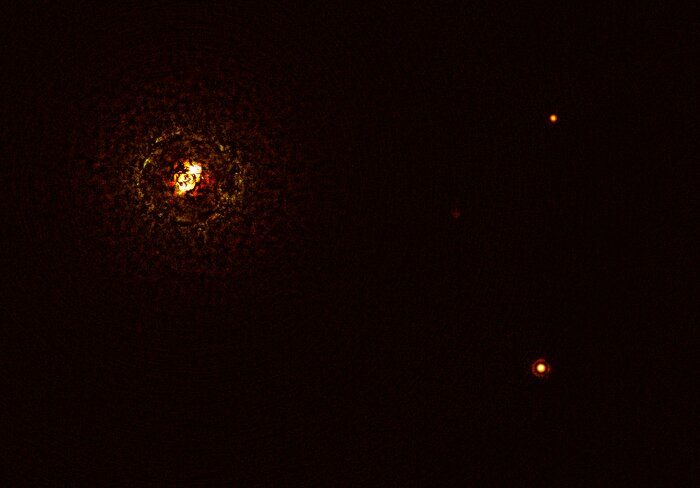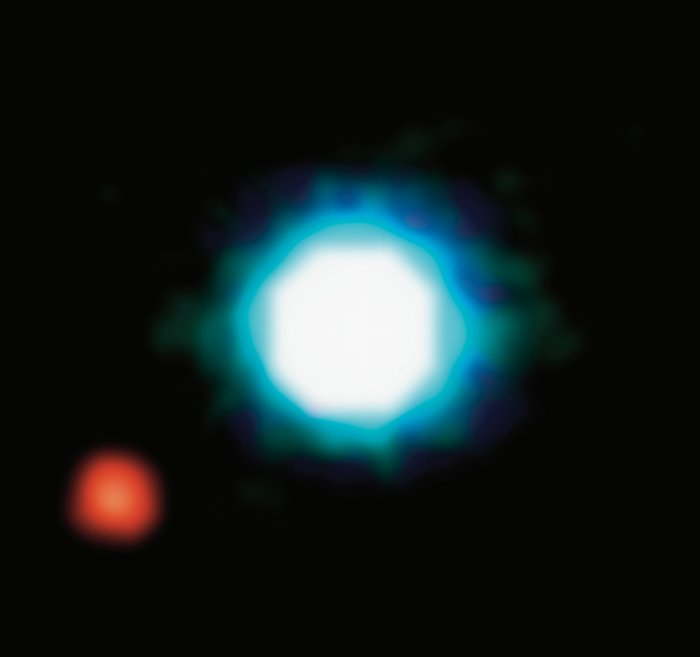Exoplanets are so faint and far away that they are almost invisible even to powerful telescopes. As a result, almost all of the worlds we have detected recently were indirectly, due to the gravitational effect they have on their host star. With new advances in technology, however, astronomers are able to take real images and spectra of exoplanets.

Credit: eso.org.
These images were taken directly by looking for light reflected from the planet’s atmosphere at infrared wavelengths.
The first detection of an exoplanet with the direct imaging method:

In 2004, an image of 2M1207b, a companion of the brown dwarf 2M1207, was obtained using the European Southern Observatory‘s Very Large Telescope in Chile.

Interesting questions on the topic:
Q: How is direct observation of an exoplanet done?
A: Planets emit more light in the infrared range than in the visible range, i.e. most of their light has a wavelength that cannot be seen with the human eye. Therefore, infrared telescopes are used to observe them. With the help of a so called coronograph the central star is hidden so that it does not (or less) overshadow the planet.
Q: Which parameter is obtained by the direct imaging method?
A: Measuring the planet’s brightness and spectrum gives us its temperature, and some sense about its atmospheric composition.
Furthermore, direct imaging allows measurement of the planet’s orbital radius.
Q: Which planets are particularly suitable for the direct imaging method?
A: Planets far from their star are particularly well-suited for this method, since they are not as easily covered by the stars glare. However, this also means that they reflect only very little starlight, so we usually need young planets that are still hot and thus luminous.
Furthermore, big planets are better suited than smaller ones, since they emit radiation over a larger area.
As opposed to many other methods of exoplanet detection, direct imaging is better suited to observe systems where we look on “from above”, since there the star cannot obscure the planet.
Find more books to the topic exoplanets and astronomy for children, amateurs and scientists in our booklist.
Get back to the outreach page
